Kitchen Yarns Read online
Page 8
Wrap 3 or 4 tortillas at a time in a dampened paper towel and warm for 30 seconds in the microwave to make them soft and pliable. Keep them covered.
Heat the canola oil and add the flour, stirring to make a roux.
Add the green enchilada sauce and the chicken broth, stir, and let simmer for one minute. Turn off the heat.
In the bottom of a roasting dish, spread a thin layer of the sauce.
Fill the tortillas, one at a time, with a scant ¼ cup of chicken, a tablespoon of the cream cheese mixture, and a big pinch of shredded cheese.
Roll the tortillas up tight and place them in the pan seam side down.
When the pan is full, with the enchiladas nestled close together, pour the remaining sauce over the top and then sprinkle with about 1 cup of cheese.
Bake until bubbling, about twenty minutes.
Serve with dollops of sour cream and the remaining scallions.
Party Like It’s 1959
When I was a child, dinner parties seemed to belong to some vague and distant grown-up world where women wore shiny dresses with tight bodices and full skirts, bright lipstick, and strings of perfect pearls. The men, I imagined, wore ties and wingtips. They drank fancy cocktails and ate prime rib on heavy china. This image came from Saturday afternoon movies and glossy magazines, pictures of an adult world I could only peek into.
Now that I’m a grown-up, my dinner parties look nothing like the ones I used to imagine. My plates are colorful Fiesta ware. The drink of choice is wine—red or white. No one is very dressed up. And the food is always an experiment. I give my guests chimichurri sauce, ginger martinis, Israeli couscous, green-chile tamales, paella. When I go to dinner parties, I’m served tandoori chicken, Moroccan tagines, and spaghetti—carbonara, puttanesca, or arrabbiata. I’m served family-style, with make-your-own pizzas or tacos.
That is, this format held until a Saturday night in the early 1990s.
That night, my then husband and I drove to a house in a cul-de-sac. Our host and hostess were an older couple, he in a snappy tie, she in pearls. Their house was in a suburb known for its good schools and manicured yards. But they were jolly and refined, old hands at entertaining. We stepped into a sunken living room. We were offered a drink. “White wine,” I said. “Tom Collins,” one of the other women said. “Whiskey sour,” said another. “Martini. Up. Extra olives,” said a third. The host dipped into an alcove where a complete bar awaited him, and he proceeded to shake, stir, chill, garnish, and—yawn—pour (that would be my white wine). The Tom Collins sat pretty and pink in a tall glass with a maraschino cherry floating happily inside. The whiskey sour had froth. Three olives bobbed in the martini.
We sat down to nibble Ritz crackers and a log of cheddar cheese rolled in chopped walnuts. A silver tray of shrimp and cocktail sauce was passed around. When I was growing up, my parents didn’t have dinner parties, but if they had, this is what they would have been like. I started to grow nostalgic for something I’d never experienced.
We were called into the dining room for dinner. A white tablecloth. Silver candlesticks with white candles already lit. The table set with real china: ivory with a border of pink flowers and a silver band around the edges. On top of each dinner plate sat a fluted clear salad plate, the first course already served and waiting. I thought, fleetingly, of my too-heavy wooden salad bowl filled with baby lettuce and shaved Parmesan and maybe fennel. This salad was iceberg lettuce, one wedge of tomato, and one perfect circle of cucumber, all of it coated with Good Seasons salad dressing, the one you mix in its own cruet.
I would recognize it anywhere, that dressing. Its speckles of red and black, its greasy sheen. In college, my roommates and I played grown-up by cooking dinner for our boyfriends. We marinated London broil in that same salad dressing and served it with Rice-A-Roni, the San Francisco treat. For dessert, we gave them ice cream with canned cherries dumped on top and doused with brandy, which we then lit. Cherries Jubilee! Our dessert was flambé! And so were we, college kids all on fire, eating this fancy dinner just as a prelude to sex. On those Saturday nights, we traded in our blue jeans for dresses, and wore lip gloss and blush. We were not yet sure what real adults did at dinner parties, but we felt our way along, playing Frank Sinatra records and struggling for mature conversation around the table. I hadn’t thought of those college dinner parties in years, but this dinner party in the cul-de-sac was doing funny things to me. It was making me wistful. It was making me remember how I used to love kissing a boy named David all night after that Cherries Jubilee.
Main course. The host appeared with a large platter that matched the rest of the china—I saw the silver edge peeking out from beneath a chateaubriand ringed with asparagus cooked so thoroughly they appeared to be asleep, small new potatoes, and ridged disks of bright orange carrots. It was so beautiful, I had the urge to cry, though I’m not certain why. “How do you like your meat?” the host asked, hovering beside me with that gorgeous platter of food. I wanted to take it from him and eat it all. But of course I didn’t. I said, “Rare,” and he placed two perfectly cooked rare slices on my dinner plate, along with the vegetables and—what was this the hostess was handing me in a sterling silver gravy boat? I took it from her, looked inside, and found béarnaise sauce, thick and yellow and flecked with tarragon.
My wineglass was filled with red wine. My dinner was before me. I gazed at it and was struck by a sense of familiarity so strong I couldn’t put my knife and fork to the meat. I was paralyzed by memory. I had had this dinner, this very dinner—chateaubriand with béarnaise sauce and asparagus and new potatoes and carrots—many times before. But when? Where?
Then I remembered. This was the exact dinner we used to serve on transcontinental flights in first class on TWA in 1978 when I was a flight attendant. I placed the white linen napkins on the tray tables, making sure the red TWA logo was in the lower right-hand corner, facing the passenger. I wheeled my dinner cart into the aisle and carved the chateaubriand in front of the entire first class. It was air travel as theater. And for me, a twenty-one-year-old from a small town in Rhode Island, it was the height of sophistication. Aha! I thought, standing at the front of that first-class cabin gazing at the passengers. This is what the adult world looks like, what they eat, how they travel. It was as shiny and beautiful as I had imagined as a little girl.
Even in coach on long-haul flights, the meal service ended with an after-dinner drink cart. Liqueurs arranged on top of those white linen napkins, red TWA logo facing out, miniature bottles of amaretto, Grand Marnier, Kahlúa, B&B, all standing there beside small after-dinner drink glasses. In flight attendant training, we had had to pass a test in which we correctly identified all of those liqueurs without their labels, which, we were told, fell off when they got wet. With my eyes closed I could recognize the slender triangle of Galliano, the squat amaretto, the Frangelico monk.
We put a piece of dry ice on that cart, sprinkled it with water, and had our own homemade fog machine. I strolled down the aisles of a Lockheed L-1011 in a mist of glamour and promise, the children’s eyes widening with wonder, businessmen opening their wallets, wives asking husbands, Which should I get? We asked unaccompanied minors or well-behaved kids to follow us with a tray of gold foil–wrapped TWA mints; inside, the green was as pale as the crème de menthe we were offering.
Finally, I returned to this dinner party, dizzy for what I once had, what I never had, what I had hoped for. Dizzy with nostalgia for those long-ago kisses that tasted like canned cherries, for the glamour of flying to Los Angeles in a fog of dry ice, for the twenty-one-year-old girl I once was, standing in front of thirty first-class passengers in my Ralph Lauren uniform and black pumps carving a chateaubriand into perfect slices to a round of applause.
As an adult, I know that how we entertain is a combination of who we are and how we live, of all the dinners we’ve had and all the dreams we still embrace. But on that night in the house with the sunken living room, at the place I once yearned to be, I am happy to cut my meat w
ith the heavy wedding silver. I put it into my mouth, and—finally—I savor it.
Michael’s Whiskey Sours
My husband, Michael, not unlike those men and women at the dinner parties of the 1950s and ’60s, likes a cocktail hour before dining. At home, this means he whips up negronis or Manhattans for us, and we sit sipping our drinks and nibbling cheese. But my favorite of all the cocktails he makes for me is the whiskey sour. The negronis and Manhattans I typically get in restaurants are quite good. The whiskey sours, not so much. But Michael’s whiskey sour, like Michael himself, is pretty damned perfect. More about that later, in “Three Potato,” where you will also learn that he makes the only baked potato I’ve ever liked.
MICHAEL’S WHISKEY SOURS
This recipe uses simple syrup, which is simply ½ cup of sugar and ½ cup of water microwaved until the sugar is dissolved. It can be adjusted for any number of servings by using the ratio of 4 parts bourbon to 1 part citrus juice and 1 part simple syrup.
Serves 8
INGREDIENTS
3 egg whites
16 ounces bourbon
4 ounces simple syrup
3 ounces lemon juice
1 ounce lime juice
Put the egg whites in a large Pyrex measuring cup and blend them using a hand blender or whisk until they are lightly foamy.
Add the remaining ingredients and blend or whisk again.
Taste and add more lemon juice or more simple syrup as needed.
Strain into another container, then return the strained whiskey back into the measuring cup (for easy pouring).
Fill the balance of the cup with ice and stir until thoroughly chilled.
Pour into chilled coupes or over ice in old-fashioned glasses.
Cherries Jubilee
I have to admit that I really liked the dinner-party Cherries Jubilee of my college years, though I’m certain I wouldn’t be so keen on it now. The real recipe is not at all hard to make, so if you get the desire to party like it’s 1959, make a batch of Michael’s Whiskey Sours to start and finish up with classic Cherries Jubilee, which was invented by none other than the renowned French chef Auguste Escoffier in 1887, to honor Queen Victoria and celebrate the fiftieth year of her reign. Escoffier had already created Peach Melba for opera singer Nellie Melba and eggs scrambled in champagne for Sarah Bernhardt. Why not invent a dessert for the queen? His original dish did not include ice cream, which is how we always serve it now. Rather, it highlighted Queen Victoria’s favorite fruit—the cherry—by adapting an old French technique that used sugar and brandy to preserve fruit. It’s no surprise that the dessert became popular at dinner parties in the 1950s and ’60s, when tipsy hostesses wowed their guests by flambèing the cherries in brandy for a dramatic ending to the meal. We are only lucky that houses and hostesses didn’t flambé as well.
DINNER-PARTY CHERRIES JUBILEE
You’ll want to have long matches on hand for this dish.
Makes enough for a dinner party of 6
INGREDIENTS
3 tablespoons butter
6 tablespoons sugar
6 cups dark Bing cherries, pitted and stemmed (frozen are acceptable but please forgo the canned ones)
Juice of 1 lemon
6 tablespoons kirsch
Vanilla-bean ice cream
Melt the butter in a medium saucepan.
Add the sugar and stir until it dissolves.
Add the cherries.
Add the lemon juice.
Simmer until the cherry juice thickens.
Remove from heat and add the kirsch.
Immediately hold a lit match just above the surface of the cherries. The sauce must be warm to ignite.
Once the flame subsides, put the cherries with their juices in parfait glasses and top each with a scoop of ice cream.
Soft Food
One day the pediatrician looked at me and announced, “Sam is ready for soft food!” Of course, Sam had eaten applesauce and Gerber baby food. This was the next step in his diet—soft food that wasn’t pureed or jarred. I felt the same wave of bafflement that had washed over me again and again during the six months since he’d been born. From the day I’d given birth to my son, I’d realized that I had entered a strange and foreign world. I was thirty-six years old and had traveled to four continents and dozens of countries. But never had I felt so out of my element as I did in the land of motherhood.
Until I had Sam, I had held a baby exactly once. I was navigating this new land mostly alone. Sam’s father had left me during the pregnancy, vacillating almost daily between coming back and staying gone—mostly staying gone—until Sam was almost two years old and we got married. So several times a week—sometimes several times a day—I found myself on the phone to my friend Beth, who had three children and was pregnant with a fourth. “Something’s happening to me!” I told her a few days after Sam and I came home from the hospital. “My breasts are hardening!” “No, no, darling,” she cooed in her calming voice. “That’s just your milk coming in.” I called Dr. Utter, the pediatrician, a lot, too. One morning when Sam was a few weeks old, I peeked into his diaper and shrieked. As soon as Dr. Utter picked up the phone, I blurted, “I have to bring Sam in. His poop isn’t mustard-colored like they describe in What to Expect the First Year, it’s closer to chartreuse.” “Well, well,” Dr. Utter said, “put down the color wheel and just change the thing.” My parents were nearby, and helpful in coming over to watch Sam so I could take a shower or a nap, but they, too, were fuzzy on things like what color his poop should be.
Now I was confronted with this: soft food.
On the way home to our second-floor apartment in a lovingly restored Colonial house, with Sam strapped into his car seat babbling happily at Pat, the androgynous black-and-white face that I’d hung in front of him for proper stimulation, I said, “Soft food, soft food, soft food. What the hell is soft food, Sam?” Since he was my constant companion, I talked to him a lot. Years later, my landlady told me she used to listen to my one-way conversations with my baby, certain he would grow up to have a great vocabulary. (He did.)
My apartment had beautiful historical details. What it didn’t have was a parking place. How far that two-block walk from the lot where I rented a space felt carrying a packed diaper bag and a car seat with a baby strapped into it. I think I felt loneliest on those walks, wondering how I’d landed here, the man I’d fallen in love with AWOL and me alone in Providence, Rhode Island, nearly two hundred miles from my beloved Manhattan, where I’d lived and built a life I loved, now a single mother with no friends. Across Hope Street, past lovely homes painted Colonial colors, with historic plaques beside their front doors; across Brook Street, where, if I wasn’t exhausted from raising a baby alone and trying to finish a novel, I would stop at Acme Video for a couple movies; then up the hill that was my street, Transit Street, whose name offered the possibility that this was just a transition, that soon Sam and I might land back in Manhattan; then down the long driveway of No. 101, past the garden that had boasted pale pink peonies in April, when Sam was born, and now showed off hot-pink and crimson zinnias; then up a winding flight of steep stairs, clutching the car seat and the diaper bag and still talking out loud to Sam, except now I was most likely saying, “Almost there, buddy, almost there”; and then finally flinging open the door and dropping the diaper bag and catching my breath. Home.
I am a nester, and I have always prided myself in how through fourteen moves in fifteen years I had always created a home. As soon as I walked in the door, everything felt better. Except one thing still nagged at me: soft food. I briefly considered skipping this step and keeping him on the baby-food squash he loved so much. But no, I was going to do this right. I took Sam out of his car seat and let him crawl around the kitchen while I stared into the refrigerator and surveyed the various food in bowls on the counter. I had hummus, which was soft. I had avocados, which when mashed and seasoned could become guacamole, which was also soft. I smiled and started to peel a Hass. �
��Okay, buddy,” I said, “I’m going to make you lunch.”
Oh, I was proud of myself! Once again I had navigated my way through the streets of motherhood. Not so long ago, I had felt smug when I’d untangled the Métro in Paris or the Underground in London. I used to study maps, my finger tracing the way to the Grand Place in Brussels or the train route that would take me to Heidelberg, Germany. But there was no map for motherhood, and each triumph made me giddy. Sam feasted on hummus and guacamole, baba ghanoush and smoked trout spread. His breath stank, and his diapers stank even worse. But he gobbled up every spoonful I offered him.
When Beth arrived one afternoon, I decided to show her how far I’d come.
“So,” I said as I filled Sam’s plastic dish shaped like an airplane with smoked trout in one compartment and roasted garlic hummus—his new favorite—in another, “Sam is eating soft food now.”
Beth looked puzzled. “What are you feeding this baby?” she asked me.
I told her. She started to laugh. “Ann,” she said, “soft food means pastina or creamy rice. Applesauce.”
Applesauce? It had never occurred to me. But there was no turning back. At six months old, Sam had a palate more sophisticated than that of some adults I knew. By the time he was three, he was gobbling the prized fish eyes at a dinner party and asking for thirds of rabbit pâté in Normandy; when we visited Vietnam when he was twelve, he was the only one of us who dared to eat durian, the Asian fruit that smells like stinky feet. And by the time he was in high school, he was cooking beside me in the kitchen, chopping and sautéing and tossing.
My house salad dressing is the one Sam invented—olive oil, lemon, salt, and honey—and when I roast meats I still make Sam’s Potatoes: cut-up Yukon Golds with more garlic, rosemary, and salt than seems prudent. When he comes home for a visit now from his own apartment in Brooklyn, he is always ready to cook with me. We look through cookbooks together for what I’ll make: beef in Barolo or braised ribs. Something to go with his specialty—which, I wasn’t surprised to learn, is polenta, that softest of soft food. We have traveled far together, Sam and I. We did move out of that apartment eventually. His father came back for a while, we added another baby, we moved into other homes. For over a decade we lived in our own Colonial house, one street parallel to that first apartment on Transit Street.

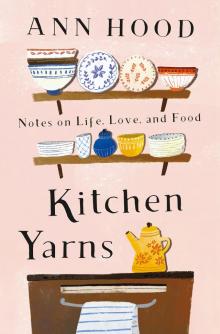 Kitchen Yarns
Kitchen Yarns Waiting to Vanish
Waiting to Vanish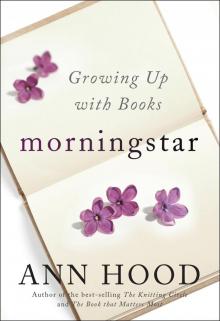 Morningstar
Morningstar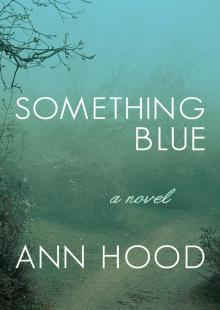 Something Blue
Something Blue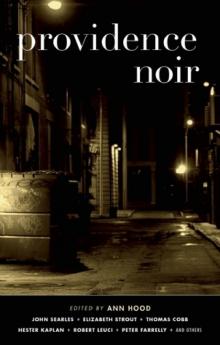 Providence Noir
Providence Noir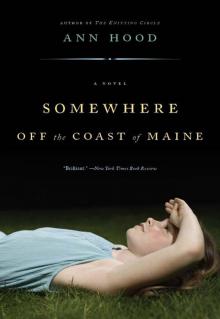 Somewhere Off the Coast of Maine
Somewhere Off the Coast of Maine Jewel of the East
Jewel of the East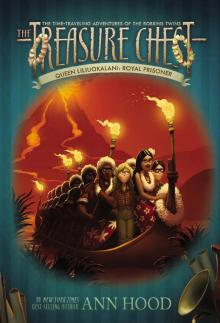 Queen Liliuokalani: Royal Prisoner
Queen Liliuokalani: Royal Prisoner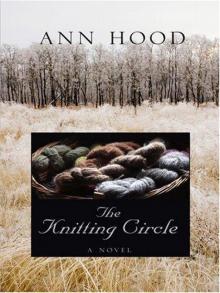 The Knitting Circle
The Knitting Circle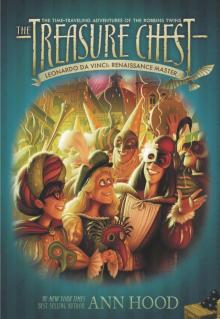 Leonardo da Vinci: Renaissance Master
Leonardo da Vinci: Renaissance Master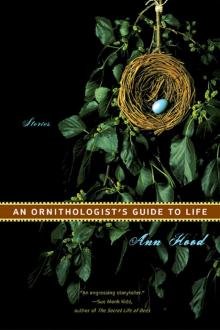 An Ornithologist's Guide to Life
An Ornithologist's Guide to Life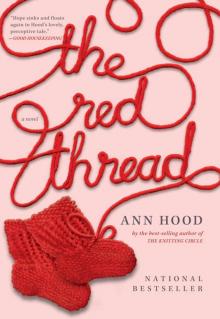 The Red Thread
The Red Thread She Loves You (Yeah, Yeah, Yeah)
She Loves You (Yeah, Yeah, Yeah)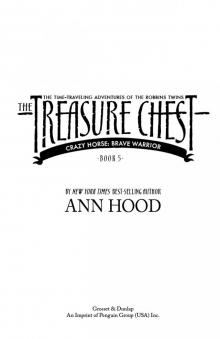 Brave Warrior
Brave Warrior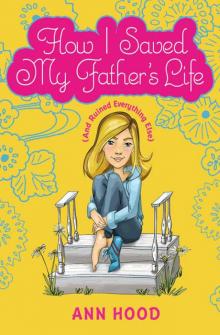 How I Saved My Father's Life (and Ruined Everything Else)
How I Saved My Father's Life (and Ruined Everything Else) An Italian Wife
An Italian Wife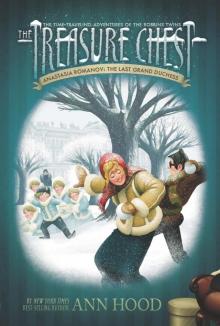 Anastasia Romanov: The Last Grand Duchess #10
Anastasia Romanov: The Last Grand Duchess #10 Prince of Air
Prince of Air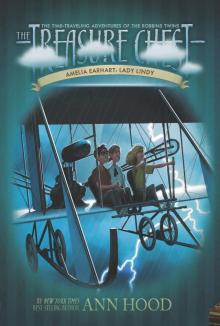 Amelia Earhart: Lady Lindy
Amelia Earhart: Lady Lindy Places to Stay the Night
Places to Stay the Night Little Lion
Little Lion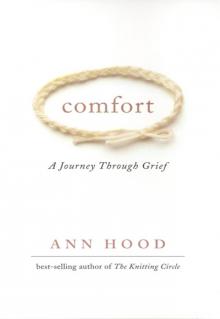 Comfort
Comfort Angel of the Battlefield
Angel of the Battlefield